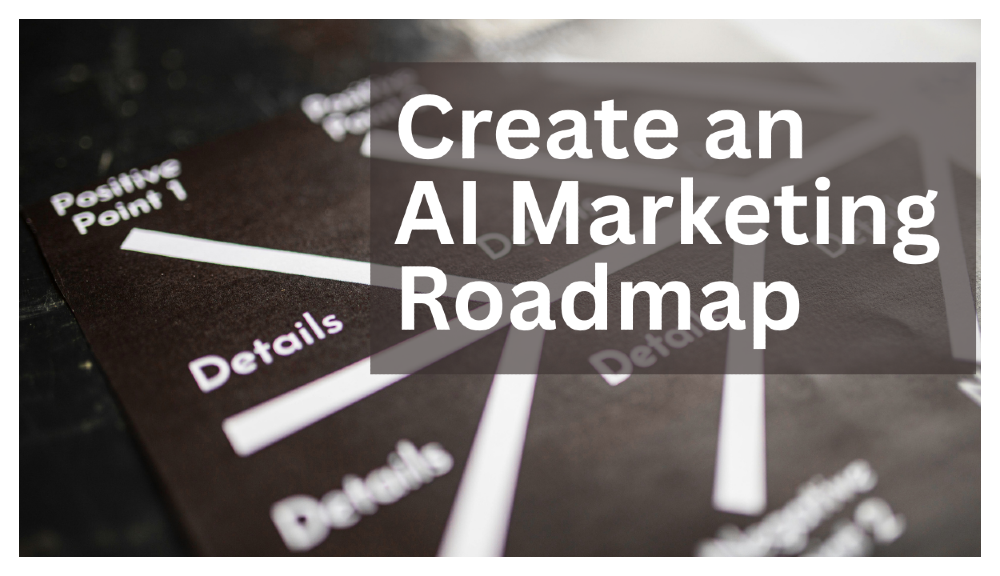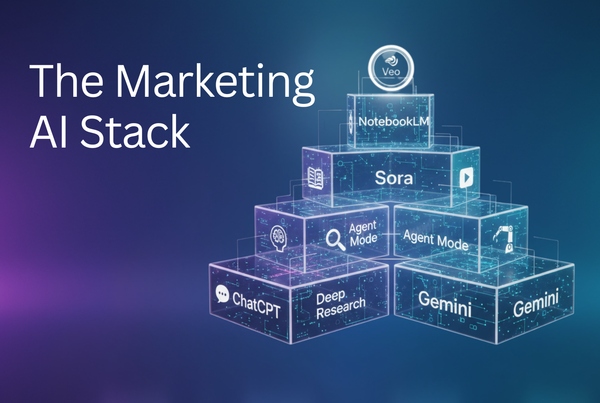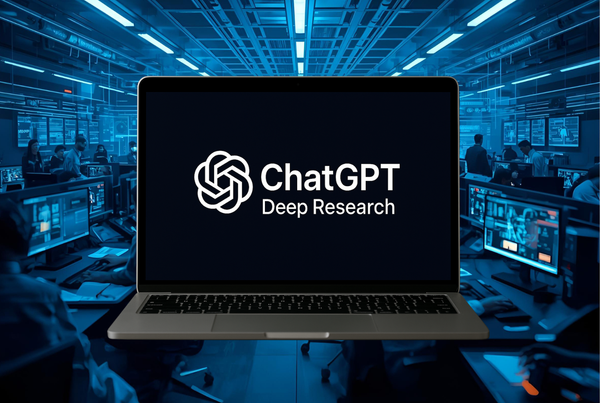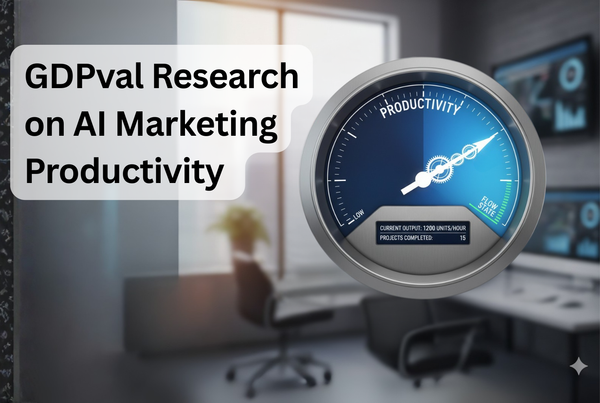The Marketer's Guide to Creating a Practical AI Roadmap
If you want to lead in the age of AI you need a roadmap. What does a good AI roadmap look like for marketers? Here's what McKinsey, Gartner, and others suggest.

Of the many interesting points in the Marketing AI Institute’s new State of Marketing AI Report, the point about a lack of company strategy and leadership jumped out.
“Companies still lack the internal governance necessary to truly scale AI”
“Roadmaps are the unlock, and there’s never been more of a need for them”
According to their data, companies with an AI roadmap are twice as likely to offer AI training, have an AI council in place, and implement ethical and generative AI policies. In short: if you want to lead in the age of AI, you need a roadmap.
But what does a good AI roadmap actually look like for marketers?
To answer that, I reviewed frameworks published by consulting firms like McKinsey and Gartner, practical how-tos from Salesforce and Simple AI, and insights from AI marketing engineers and other thought leaders.
Their roadmaps vary in structure, but they share common principles. They prioritize business impact over novelty, treat data like infrastructure, and blend strategic governance with tactical pilots.
First, here’s how to think about it…
Start With Strategy, Not Tools
Before choosing an AI platform or launching a chatbot, top experts agree: get clear on what you want AI to do for your business. Salesforce, McKinsey, and Gartner all emphasize setting measurable, specific goals tied to business strategy.
“Start by defining your AI goals and objectives, ensuring they align with your overall business strategy,” advises one strategic roadmap. Whether it’s improving lead conversion, personalizing content, or automating campaign reporting, your AI efforts must ladder up to what matters most.
Gartner suggests using OKRs (Objectives and Key Results) to set this foundation, while McKinsey recommends viewing your roadmap as a phased journey, from pilots to full industrialization.
Prioritize High-Impact, Low-Effort Use Cases
Not every AI tool needs a six-month deployment. Most roadmaps recommend starting small, especially in marketing.
Simple AI encourages marketers to look for “high-impact, low-effort” wins. Think AI-generated ad copy, churn prediction models, or smart chatbots that handle FAQs. These projects can show fast ROI, helping you build buy-in for larger investments. “Celebrate those early wins,” says the AI Marketing Engineers framework. “They pave the way for more complex AI adventures.”
Build a Cross-Functional AI Team
You don’t need a lab full of data scientists, but you do need a capable, collaborative team. AI roadmaps consistently highlight the need for cross-functional expertise.
Bring together marketers, data analysts, IT, and external partners where needed. The AI Marketing Engineers call this your “AI dream team” , one that can translate between strategy and implementation. Gartner also emphasizes culture and people: identifying AI talent gaps, upskilling the workforce, and managing change through clear communication.
Tidy Your Data House
AI is only as good as the data that feeds it. Poor data quality is one of the biggest blockers to AI success. Every roadmap , from McKinsey’s to Gartner’s , calls out data infrastructure as foundational. This includes data readiness assessments, governance policies, metadata management, and continuous data observability.
“AI-ready data requires a different set of capabilities than traditional data management,” notes Gartner. Don’t skip this step , it’s where many projects fail.
Run Pilots Before You Scale
Rather than going all in on AI from the start, top-performing companies test and learn. Pilots allow you to evaluate models, refine your use cases, and work out the bugs in a low-risk way.
Salesforce and McKinsey both stress the importance of pilot programs. Choose one campaign or workflow to augment , say, testing AI-powered segmentation for email campaigns , and evaluate it against KPIs before expanding. This phased approach aligns with McKinsey’s “Proof of Concept → Formalization → Scaling → Industrialization” maturity framework.
Invest in Governance and Ethics Early
Gartner frames governance as one of seven essential AI roadmap workstreams. Why? Because ethical AI isn’t optional.
Whether it’s bias mitigation, privacy protection, or simply having clear accountability, AI governance should be part of your roadmap from day one. Companies with governance structures, like ethics committees or audit protocols , are better positioned to manage risk and scale safely.
“AI isn’t just about innovation,” as one framework put it. “It’s about responsibility.”
Measure, Monitor, and Improve
The best AI roadmaps don’t end with deployment. They include systems for continuous evaluation, using performance data to tweak, optimize, and evolve. McKinsey emphasizes tying AI initiatives to business KPIs, while the AI Marketing Engineers urge marketers to treat AI as a long-term process of refinement.
Now, Build the Plan…
What should your roadmap document look like? Once again, I’m inspired by the Marketing AI Institute on this:
- Discovery. Summarize your organization’s understanding and use of AI today. Look at what others are doing in your industry, and beyond, to shape a vision for the smarter business you want to build.
- Create and Prioritize Use Cases. Consider each function of your marketing department and identify the ways AI tools can add efficiency, improve quality, and scale impact. Add a prioritization scale (1 to 5 scale) for business impact potential and another for ease/cost to implement, then stack rank them. Keep an eye out for the quick win opportunities.
- Define Problem-Based Priorities. When your use cases are done, take a step back and look at this through the lens of your business goals. Take a strategic long-term view at the biggest problems to solve and most significant opportunities ahead. Add these to the plan. They will incorporate multiple use cases, and likely collaboration with other departments.
- Map a Timeline. Map a timeline for all use cases and problem-based priorities.
- Build a Budget. Estimate the costs for the tools, learnings, and implementation resources needed to bring each to life. This will be tough to predict, but it’s important to start with something.
- Action Plans. Shape all this into a planning document that you can share with leaders and other teams, so everyone is rowing in the same direction.
If there’s one takeaway from all the roadmaps I reviewed, it’s this: successful AI adoption isn’t about having a perfect plan on day one. It’s about developing a living strategy that evolves as your team, tools, and market change.
Start small. Be strategic. Build the team. Prioritize good data. Govern responsibly. And most importantly, treat your AI roadmap not as a document, but as a process of learning, scaling, and transforming how marketing works.





